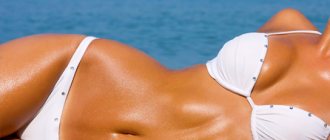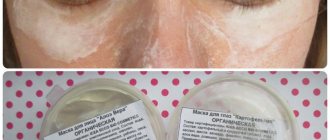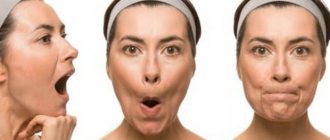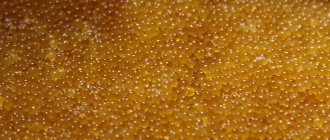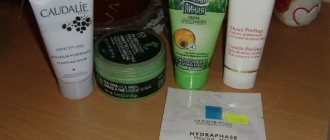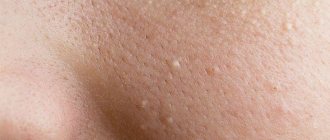Lymphatic drainage: what is it?
Manual lymphatic drainage massage should only be performed by a qualified specialist; in order to enhance the effect, special cosmetic masks and oils are often additionally used
Blood vessels move blood throughout the body, and lymphatic vessels remove intercellular fluid and metabolic products; both systems complement each other. If the transport of lymphatic fluid is disrupted, it stagnates: a disease in which lymph accumulates in the intercellular space is called lymphedema. Swelling most often occurs after injury and surgery, but also with many vascular diseases. With the help of lymphatic drainage, the physiotherapist stimulates the restoration and activation of the lymph flow.
There are main lymphatic drainage and tissue drainage. Main lymphatic drainage is aimed at working with the lymphatic centers, and tissue drainage works with small capillaries that are located throughout the body.
Complex decongestant physical therapy includes the following techniques:
- manual lymphatic drainage: lymphatic massage stimulates lymph outflow and local blood circulation;
- hardware lymphatic drainage;
- kinesio taping;
- bandaging the limb with bandages: after the massage, the areas affected by lymphedema may swell. To achieve therapeutic success, the areas are covered with bandages or compression stockings. External pressure mechanically prevents the re-accumulation of more fluid in the tissues;
- skin care: in addition to massage, it is necessary to take care of the skin. Lymphedema tissue has a poor blood supply, so wounds that are difficult to heal can occur. Consistent skin care has a preventive effect.
Manual lymphatic drainage: benefits
Those who prefer living hands, which can provide an unforgettable relaxing effect, revitalize not only the body, but also the spirit, should give preference to manual lymphatic drainage massage. In addition to improving your health, it will provide incomparable pleasure and relaxation. The technique differs from traditional muscle massage. Soft sliding movements, stroking the skin and soothing pats properly affect the blood vessels and provide the necessary healing and cosmetological effect. This method is less popular due to its low effectiveness, but it is the most beneficial for the human body. During the session, which must be carried out by an experienced, highly qualified master, the individual characteristics of the body are taken into account and the most intense points are affected. Having selected a competent specialist and identified problem areas, feel free to choose manual lymphatic drainage, reviews of which are usually commendable and positive. With deep manual massage, stagnant imperfections are eliminated. Its systematic implementation improves muscle tone, tightens them and promotes weight loss. Superficial massage should not be accompanied by pain; it has a preventive, relaxing effect.
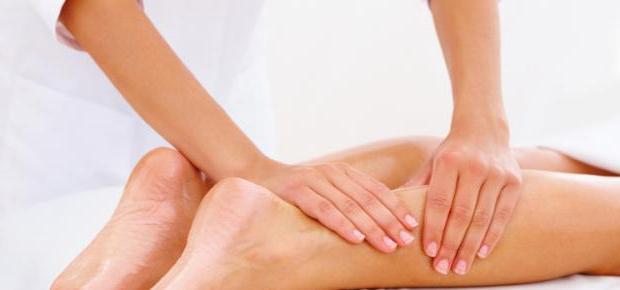
What is lymph and why improve its outflow?
Lymphatic vessels have a diameter of 0.5 to 3 mm. The lymphatic system does not have a heart, but the vessels are mobile. With the help of special valves, lymphatic fluid can move in one direction. The lymphatic system also includes about 700 lymph nodes, which are distributed throughout the body. Lymph nodes are essential for the immune system: many types of immune cells develop and multiply in the lymph nodes.
Lymphatic vessels are universal connecting pathways between the lymph, blood system and lymph nodes. Throughout the body, nutrient fluid flows from the blood capillaries, reaching every cell of the body. The function of the lymphatic system is to remove excess tissue fluid and cell waste.
Proteins, fats and clotted blood can also travel through the lymph. Bacteria, viruses, foreign bodies and tumor cells are filtered out and transported through the lymph to be destroyed in the lymph nodes.
Edema increases the distance between body cells. This condition can lead to damage to cellular structures. In extreme cases, it even leads to cell death and open wounds. Therefore, timely reduction or elimination of edema is necessary to prevent tissue damage.
In the treatment of edema, two treatment strategies are used:
- the use of medications (chemical and herbal diuretics that stimulate the excretion of water through the kidneys);
- lymphatic drainage: recommended for use in cases of lymphedema, edema with increased capillary permeability.
Lymphatic drainage for the face (eyes) helps reduce puffiness and improve the structural condition of the skin. Lymphatic drainage for the legs is most often used to reduce lymphedema - lymph stagnation. Indications are determined by the attending physician.
Three levels of lymphatic drainage
- 1 Superficial , when lymphatic capillaries located in the skin are activated (microcurrent therapy or vacuum massage is suitable).
- 2 Deep , when activation of lymph circulation occurs at the level of deep-lying lymphatic capillaries and collectors with active muscle contraction (achieved using myostimulation).
- 3 Projection , when, as a result of working on the areas of projection of the lymph nodes, their activation occurs (methods of pressotherapy or endermology are used, also known as procedures using the LPG apparatus).
Indications
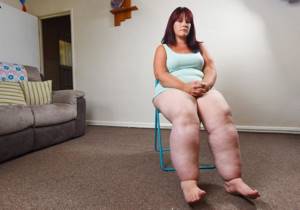
For lymphedema, lymphatic drainage, both manual and machine, is highly recommended
Lymphatic drainage of the face and other parts of the body is used to treat congenital and acquired diseases of the lymphatic system:
- Primary lymphedema develops as a result of a congenital malformation of the lymphatic system. The tissue changes during the course of the disease, and the skin is susceptible to ulcers and eczema. In Russia, about 40,000 people suffer from primary lymphedema;
- Secondary lymphedema is caused by damage to the lymphatic system. Injuries occur as a result of surgery, after accidents, with severe inflammation and tumor growth. In Russia, about 80,000 people suffer from secondary lymphedema.
Relative indications for use:
- inflammatory edema: develops with rheumatic diseases, collagenosis, chronic eczema and other skin diseases, burns and radiation therapy;
- Sudeck's syndrome: often develops as a result of trauma. Lymphatic drainage massage helps eliminate pain and swelling during the healing stage;
- lipedema: painful fatty tissue that forms mainly on the legs and buttocks;
- orthostatic edema: occurs with prolonged standing and disappears overnight. This shape is typical for people who stand or sit for long periods of time;
- idiopathic edema: this form is observed in women in menopause. The swelling is not very noticeable, but patients complain of severe pain during the day. The reason is an increase in capillary permeability;
- Gestational edema: Hormonal and metabolic changes lead to edema during pregnancy. Swelling can also be caused by kidney disease during pregnancy.
Lymphatic drainage for varicose veins (dilation of the veins of the lower extremities) is used extremely rarely, since the effectiveness of the procedure for this disease has not been proven.
Lymphatic drainage: indications for procedures and contraindications
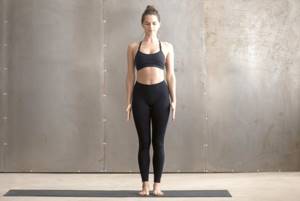
Before going to a salon for such a procedure, you should definitely consult with your doctor. He will refer you for tests, conduct the necessary studies, tests, and also advise the best type of massage. Only after this can you safely go for lymphatic drainage using the recommended method.
Indications
Such procedures can be used to achieve both cosmetic and therapeutic effects.
- Initial stages of varicose veins.
- Excess body weight.
- Cellulite at all stages.
- Complications of diabetes.
- Swelling is normal, after surgery, swelling, bruising.
- Obesity of different types.
- Acne.
- Flabbiness, sagging muscles, skin.
- Weakening of the immune system.
- Violation of metabolic processes, as well as the functioning of internal organs.
- Shallow scars or scars, reducing inflammation on the skin.
Carrying out the full course will ensure quick and painless removal of excess fluids, stagnant lymph, and removal of debris from the body - waste and toxins.
Contraindications
You need to be aware that there are conditions in which the procedure will be contraindicated. One controversial question remains whether it can be performed on pregnant women, who often suffer from swelling of the legs. Here you must completely rely on the advice of the doctor who is involved in your health and pregnancy.
- Exacerbations of chronic diseases.
- Colds, ARVI or FLU.
- Cardiovascular problems of the third degree.
- Tuberculosis at any stage.
- Blood clotting disorders.
- Thyroid diseases.
- Thrombophlebitis, thrombosis.
- Various skin diseases.
- Kidney or liver failure.
- Oncological problems.
- Purulent inflammation or herpes.
- Lymphadenitis, lymphadenopathy.
- Chronic venous insufficiency.
- Burns or other mechanical damage to the skin.
Contraindications and possible complications
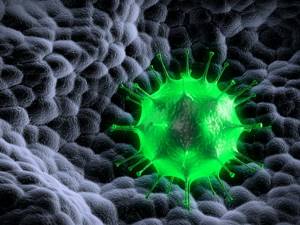
For any malignant tumors, the use of lymphatic drainage is strictly contraindicated
Lymphatic drainage massage stimulates the removal of fluid from tissues, which puts a lot of strain on the kidneys and heart. If the patient has kidney or heart disease, it is recommended to refuse the procedure. In case of high blood pressure, heart failure, angina pectoris, cardiac arrhythmia, liver weakness, the lymphatic drainage procedure should be used only after consultation with a doctor.
Absolute contraindications to lymphatic drainage medical procedures:
- acute thrombosis;
- acute rheumatic attack;
- acute inflammation due to infection with microorganisms. Lymphatic drainage (massage) may promote the spread of pathogens;
- dermatitis and tissue damage, leg ulcers, skin scars;
- malignant tumor;
- severe heart failure;
- hyperthyroidism;
- arteriosclerosis of the carotid artery (to prevent the spread of blood clots or rupture of blood vessels);
- carotid artery syndrome;
- last trimester of pregnancy (to prevent premature birth);
- inflammatory bowel diseases;
- diverticulosis;
- intestinal obstruction;
- bladder irritation;
- intestinal damage due to radiation;
- massive atherosclerosis of the abdominal aorta;
- deep pelvic vein thrombosis.
To prevent the formation of lymphedema, it is recommended to adhere to the following recommendations:
- avoid damage to lymphatic vessels due to trauma or diagnostic and therapeutic interventions;
- the amount of lymph increases with physical overload, classical massage, overheating and exposure to extreme cold (frostbite). Therefore, it is recommended to avoid the above situations and activities;
- Excess weight and lack of physical activity complicate treatment, so it is recommended to engage in aerobic exercise - running, walking.
Hardware massage
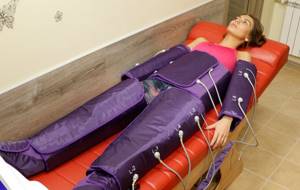
Lymphatic drainage pressotherapy will help remove harmful elements, metabolic products and dead cells from tissues.
Hardware lymphatic drainage is a collective term for physiotherapeutic procedures in which various hardware techniques are used to remove intercellular fluid:
- galvanization;
- pressotherapy;
- iontophoresis;
- microcurrent and vacuum lymphatic drainage;
- ultrasonic lymphatic drainage.
The clinical effectiveness of galvanization and iontophoresis for lymphatic or cardiovascular diseases has not been proven. Microcurrent lymphatic drainage (electrolymphatic drainage) is a type of physiotherapy that uses pulsed current from 15 to 500 μA. A pulsed current of this magnitude does not have a statistically significant effect on biological tissues; the therapeutic effect is comparable to a placebo (dummy).
Vacuum lymphatic drainage is a physiotherapeutic method, the effect of which is based on the local effect of negative pressure on various areas of the skin. Vacuum lymphatic drainage has a therapeutic effect that is comparable to that of manual therapy. The procedure enhances lymph outflow and improves local blood circulation.
Ultrasonic lymphatic drainage is a relatively new and unstudied technique that uses ultrasound to accelerate the outflow of lymph. The clinical effectiveness of the procedure has not been studied in any large studies.
In pressotherapy, air is used for lymphatic drainage, which is under pressure exceeding atmospheric pressure. During lymphatic drainage of the whole body, the patient is in a horizontal position.
When not to perform lymphatic drainage
A number of contraindications to lymphatic drainage include skin diseases. Internal massage, that is, hardware massage, has a particularly detrimental effect on various burns, deep abrasions, allergic rashes and rashes. Serious chronic edema should never be treated with lymphatic drainage. First, it is necessary to eliminate the root cause, identify possible cardiovascular diseases, and then apply external, more superficial treatment. For infectious diseases, malignant and benign formations, pregnancy, and a tendency to thrombosis, the procedure is also not recommended.
Professional manual massage
Professional manual massage is performed on an outpatient basis. Because lymphedema is often a chronic condition, outpatient treatment is carried out over a long period of time.
In many cases, 1 manual lymphatic drainage is performed once a week, depending on the degree of swelling and the stage of the disease.
Treatment time is 30-60 minutes and depends on the severity of the disease. Bandaging of the lower or upper extremities is required on an outpatient basis only in severe cases; It is usually sufficient if the patient wears orthopedic stockings.
Inpatient treatment should be used for severe swelling. Later, irreversible tissue changes should be expected. Inpatient treatment is also indicated for swelling with ulceration, complications, or in cases where outpatient treatment does not achieve the desired results.
Treatment is carried out in rehabilitation centers in specialized lymphological departments. Inpatient treatment lasts from 2 to 6 weeks depending on the severity of the disease. You can do lymphatic drainage of the face or other parts of the body at home using special equipment. Equipment for lymphatic drainage can be purchased at specialized medical stores.
Results of lymphatic drainage massage
Lymphatic drainage of the face will relieve the face of puffiness, bags under the eyes, puffiness and bruising for a long time. Due to improved blood circulation, the appearance and color of the skin is significantly transformed, a healthy, fresh appearance is acquired, shapes are corrected, facial wrinkles are smoothed out and the number of deep wrinkles is reduced, smoothness and elasticity are acquired. Facial lymphatic drainage is most often performed using microcurrents, which stimulate muscle contraction and relaxation. This is a useful facelift that is a worthy replacement for plastic surgery. Manual facial massage can be performed along with the use of masks. If your financial situation allows, do not refuse to apply them during the session.
Lymphatic drainage of the body is where you should start losing weight and transitioning to a healthy lifestyle. It corrects the contours of the figure, improves the condition of the skin (smoothes scars, stretch marks) and veins, eliminates cellulite, saturates the body with oxygen, and, coupled with proper nutrition, reduces the volume of problem areas. A large number of vascular diseases, unpleasant from an aesthetic point of view, pain and ailments occur on poor women’s legs. Lymphatic drainage of the legs will help get rid of all this. The procedure eliminates cellulite, tightens the skin, reduces pain, heaviness and swelling, relieves inflammation, and favors the vascular system. Moreover, in this case, manual home lymphatic drainage is excellent.
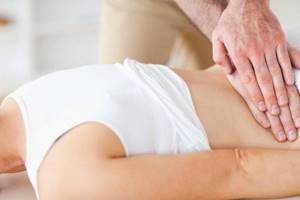
How to do lymphatic drainage at home?
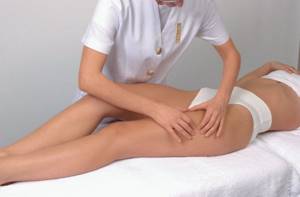
For tangible results, you need to complete a course of 6 to 10 sessions of lymphatic drainage massage
Manual lymphatic drainage of the legs, face or arms should not be performed without consulting a doctor. Lymphatic drainage massage of the legs, if performed incorrectly at home, can aggravate the course of lymphostasis.
Before performing hardware or manual lymphatic drainage of the legs or arms at home, you should consult a doctor. Manual lymphatic drainage of the arms, face, legs, and abdomen can only be performed by a qualified massage therapist.
results
Lymphatic drainage massage has proven clinical effectiveness: the physiotherapeutic procedure stimulates the movement of fluid in the lymphatic vessels.
As the tissue relaxes, the pain may also go away. The blood supply to the tissue can also be normalized, which accelerates the regeneration process.
Compression therapy makes an important contribution to the further flow of fluid into the blood capillaries.
Depending on how advanced the disease is, hardware lymphatic drainage is performed from several times a day to several times a week. The effect of one treatment session lasts only a few hours, so the affected areas are bandaged with bandages to stabilize the therapeutic effect.
Lymphatic drainage massage cannot cure the cause, but it significantly improves the quality of life of patients and prevents complications. If cure is not possible (for example, due to congenital changes in the lymphatic vessels), the patient must undergo lymphatic drainage through massage for life.
Facial lymphatic drainage
If you do lymphatic drainage to your face, you will permanently relieve it of bruises, swelling, puffiness and bags under the eyes. Skin color and appearance will significantly improve due to increased blood circulation. But this will not help in removing freckles.
The shape of the face will be corrected for the better, it will look healthier and fresher, facial folds will smooth out and the number of deep wrinkles will significantly decrease. The skin will become much smoother and more elastic. Facial lymphatic drainage is usually performed using microcurrents, which stimulate muscle relaxation and contraction. But this procedure will not change the shape of the face.
A facelift occurs that is almost equivalent in effectiveness to plastic corrections. Manual (manual) lymphatic drainage therapy on the face can be performed simultaneously with the application of masks. If you prefer salon treatments, it won’t hurt to add a little money and order simultaneous facial lymphatic drainage along with a mask.
The home facial lymphatic drainage procedure requires compliance with certain rules. You need to massage cleansed, steamed and warmed skin. First the forehead is massaged. Using your fingertips, apply light pressure from the center to the temples. You need to work extremely carefully near the eyes, because the skin there is sensitive and delicate.
Most popular: Vichy shower will help you for the health of body and soul
In the direction from the bridge of the nose to the temples along the lower edge of the eye socket, you need to gently rub it with your fingertips. Using exactly the same movements, you need to process the upper part of the eye socket in the direction from the inner corner along the eyebrows to their tips. The cheeks are massaged in the direction from the corners of the mouth to the temples. The movements on the cheeks need to be intensified and the massage should be carried out using pressing touches. In the area of the nasolabial folds, treatment consists of light pressure and finger strikes. The chin should be massaged with slight pressure from the center point of the chin towards the ears.
